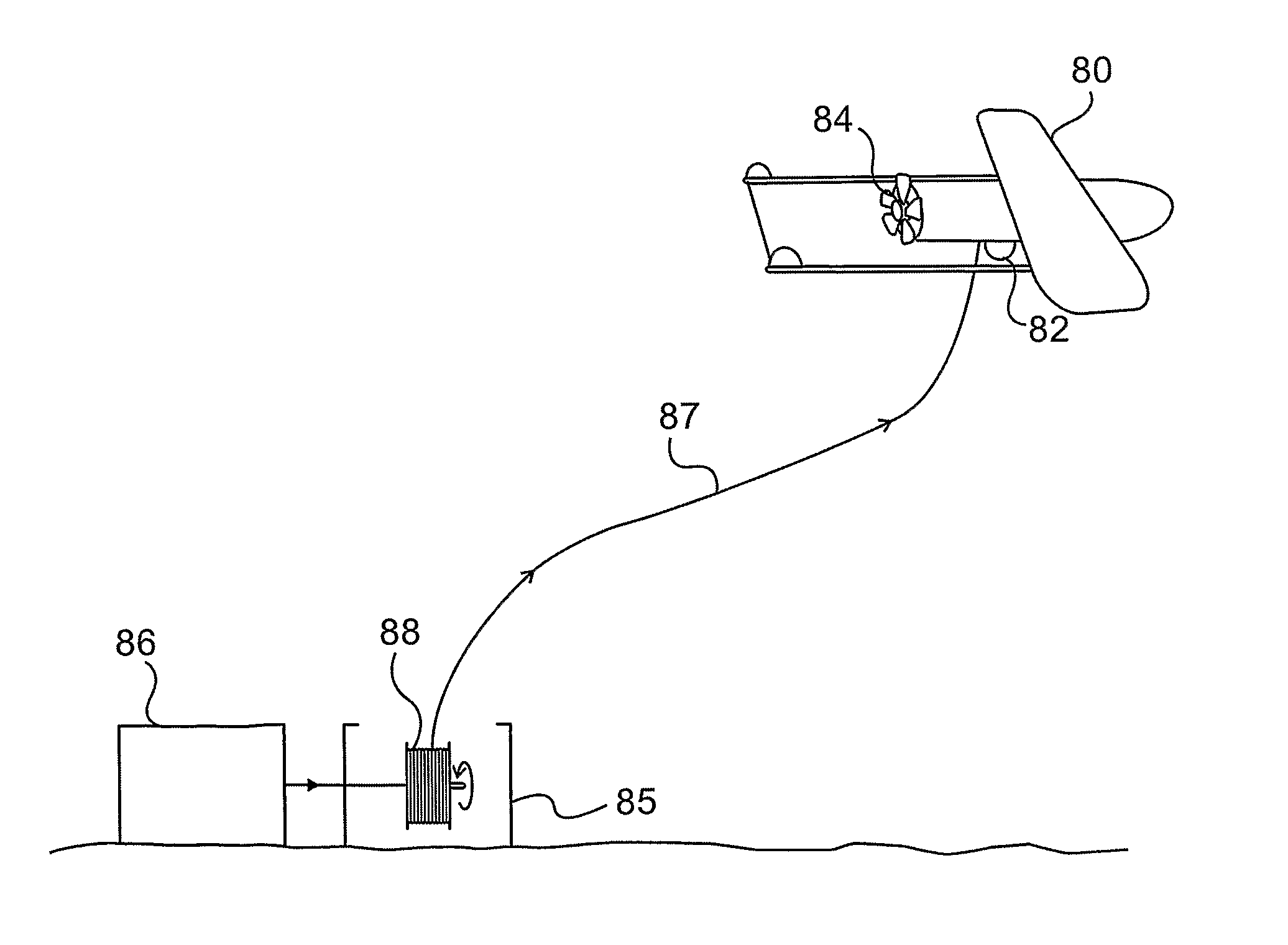Aerial observation system
a technology of observation system and aerial platform, which is applied in the direction of transmission, cosmonautic components, lasers, etc., can solve the problems of limiting the payload that can be carried by the platform, affecting the safety of passengers, and presenting a potential eye hazard, so as to increase the isolation effect, increase the altitude, and supply buoyancy
- Summary
- Abstract
- Description
- Claims
- Application Information
AI Technical Summary
Benefits of technology
Problems solved by technology
Method used
Image
Examples
Embodiment Construction
[0076]Reference is now made to FIG. 1, which illustrates schematically an exemplary system for implementing an aerial platform of the type described in the present disclosure. The main buoyancy system is provided by the helium balloon 10, which operates to provide lift, known in the art as static lift, even under zero wind conditions. Although the balloon is shown schematically as a round balloon, it is to be understood that it can take any other shape, and especially an asymmetric shape designed to provide a greater level of directional stability in the wind. Line 11, connects the underside of the balloon to a kite 12. The line should be of sufficient length such that the kite 12 and balloon 10 are able to move freely relative to each other, constrained only by the length limitations of the line 11. The entire system is connected to the ground by means of a cord connected to the kite. The kite provides a level of directional stability in the wind, which if gusty, would cause the ba...
PUM
 Login to View More
Login to View More Abstract
Description
Claims
Application Information
 Login to View More
Login to View More - R&D
- Intellectual Property
- Life Sciences
- Materials
- Tech Scout
- Unparalleled Data Quality
- Higher Quality Content
- 60% Fewer Hallucinations
Browse by: Latest US Patents, China's latest patents, Technical Efficacy Thesaurus, Application Domain, Technology Topic, Popular Technical Reports.
© 2025 PatSnap. All rights reserved.Legal|Privacy policy|Modern Slavery Act Transparency Statement|Sitemap|About US| Contact US: help@patsnap.com



